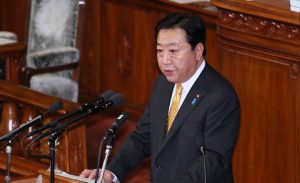Memo #189
By Tsuyoshi Kawasaki – kawasaki [at] sfu.ca
 Foreign policy may not be the result of a rational, calculated, and well-coordinated act. Instead, it may stem from messy domestic politics or bureaucratic inertia and oversight. This idea applies to the Japanese government’s actions in the Senkaku dispute, even though critics paint a portrait of a monolithic Japanese government masterminding a Senkaku strategy.
Foreign policy may not be the result of a rational, calculated, and well-coordinated act. Instead, it may stem from messy domestic politics or bureaucratic inertia and oversight. This idea applies to the Japanese government’s actions in the Senkaku dispute, even though critics paint a portrait of a monolithic Japanese government masterminding a Senkaku strategy.
Prime Minister Noda has been at odds with now former Tokyo Governor Ishihara. Mr. Noda has not coordinated his actions vis-a-vis China in a “good cop/bad cop” fashion with Mr. Ishihara. As a minister revealed, Mr. Noda was shocked by Mr. Ishihara’s belligerent attitude at their August 19 meeting. This confirmed to Mr. Noda that the national government was on the right track to avoid a collision with China. In July, Mr. Noda announced his intension to purchase the islands to stop, not joining Mr. Ishihara’s proposal to erect permanent buildings after acquiring the islands from their private owner.
Mr. Ishihara accepted the Noda Cabinet’s purchase deal with the Senkaku owner on September 11. Mr. Ishihara apparently expected that the government would consolidate Japan’s grip on Senkaku by erecting permanent buildings. His hopes have been dashed. The Noda government’s policy is to contain tension with China.
The purchase came only two days after Mr. Noda’s very brief meeting with Chinese President Hu Jintao at the APEC summit in Vladivostok. Moreover, September 18 is the anniversary of the Liutiaohu Incident of 1931 when anti-Japan sentiments typically rise high in China. Was this an intentional “slap in the Chinese face?”
These actions did not result from a well-thought-out plan by a unified Japanese government, as often depicted by some Chinese observers. They are highly likely due to the lack of coordination among government bureaucracies. The APEC schedule and the cabinet schedule are handled by the Ministry of Foreign Affairs and the Cabinet Office, respectively. The two schedules are not coordinated. Each bureaucracy has its own jurisdictional turf and pays little attention to issues of other turfs. This is what happened in September.
Our lesson is clear: doubt the image of a monolithic Japanese government.
About the Author:
Dr. Tsuyoshi Kawasaki is Associate Professor of Political Science and Director of the Asia-Canada Program at Simon Fraser University.
Links:
- The Diaoyu/Senkaku Dispute: Analyzing Chinese and Japanese Perspectives, 2012, Asia Pacific Foundation of Canada. (By Tsuyoshi Kawasaki and Yves Tiberghien).
- Essence of Decision: explaining the Cuban missile crisis, 1971 (Book by Graham Allison).
